This Is How Elon Musk Can Fix The Damage His Starlink Satellites Are Causing To Astronomy

Observations have been ruined; scientific satellites with the right-of-way have had to alter course. Here’s a how-to guide to doing better.
In any field of business or industry, the prevailing rule has always been that if there isn’t a law against it, you are free to do it. If there are no rules protecting a resource, you are free to use or take as much of it as you want to further your own ends. Until regulatory measures are put into place, disruptors and innovators are free to regulate themselves, often to the extraordinary detriment of those who depended on those now-scarce resources.
In astronomy, the greatest resource of all is a dark, clear night sky: humanity’s window to the Universe. Traditionally, its enemies have been turbulent air, cloud cover, and artificial light pollution. But very recently, a new type of pollutant has begun to pose an existential threat to astronomy itself: mega-constellations of satellites. If Elon Musk’s Starlink project continues as it has begun, it will likely end ground-based astronomy as we know it.
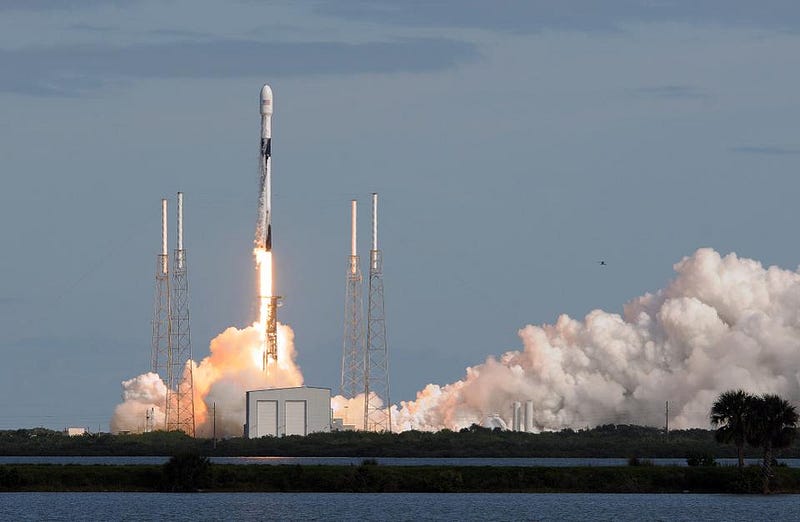
Launching satellites to provide services to those of us living on the ground is an essential part of modern-day living. GPS and telecommunications satellites enable our cellular signals and support our mobile internet today. With the coming upgrade to 5G services, a new set of infrastructure will be required, and that necessarily means an upgraded set of satellites equipped to provide that service must be launched.
One of the first companies to attempt to serve this market is SpaceX, under the guidance of Elon Musk, which plans to initially deploy 12,000 satellites in a mega-constellation known as Starlink. Ultimately, the constellation hopes to extend to a total of 42,000 satellites. As of November 20, 2019, only 122 of these satellites have been deployed, and they’ve already had a detrimental impact on astronomy on a global scale.
If we hope to mitigate this, either regulators or SpaceX executives themselves will need to mandate a change.

From the darkest skies you can find on Earth, approximately 9,000 stars are visible to human eyes: down to a visual magnitude of +6.5, the limit of human vision. Yet the first 122 satellites launched by Starlink are not only brighter than the majority of these stars, they move quickly throughout the sky, leaving trails that pollute astronomers’ data.
If these satellites were either faint, few in number, or slowly moving, this would be only a mild problem. If you’re only observing a narrow region of the sky, you’d simply reject any exposure frames (or even just the pixels from them) where the offending objects streak across the sky. But with large numbers of bright, rapidly moving satellites, particularly if you’re searching for changes from frame-to-frame (like many current and future observatories are designed to do), you have to throw out any exposure frame with these artifacts in them.
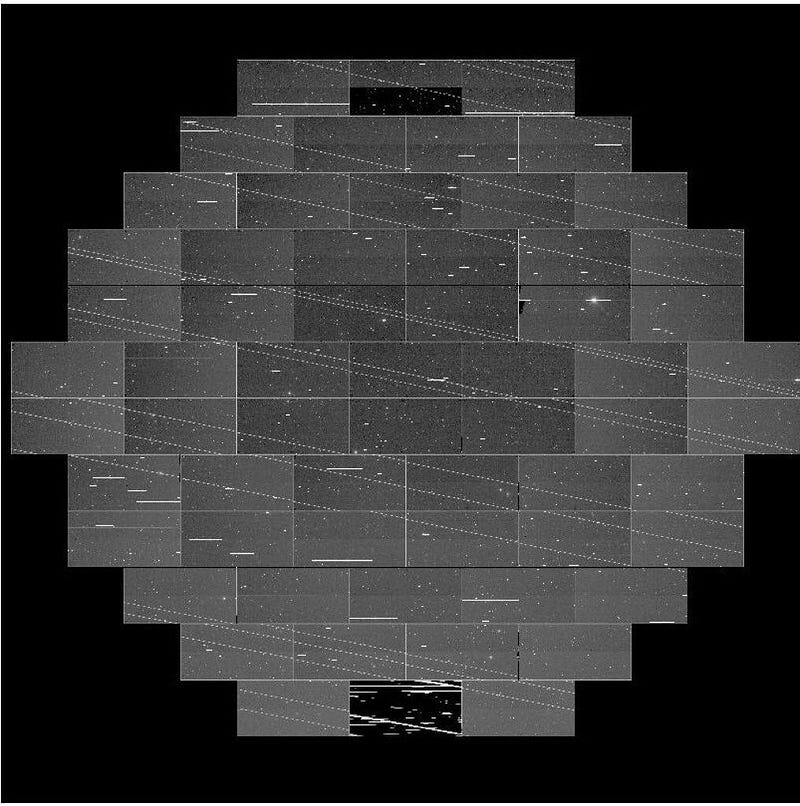
On November 18, 2019, a series of 19 of these Starlink satellites passed over the Cerro Tololo Inter-American Observatory’s site in Chile, lasting for more than 5 minutes and heavily affecting the wide-field DECam instrument, which images a field containing 3 square degrees at an outstanding 0.263 arcsecond-per-pixel resolution.
Even though this only represents 0.3% of the total number of proposed Starlink satellites that SpaceX wants to launch, the consequences are clear: wide-field astronomy designed to look for faint objects — prime goals of observatories like Pan-STARRS, LSST, and any observing program geared towards finding potentially Earth-hazardous objects — is going to be significantly hindered. Averaging over frames is not a desired option, because it erases astronomers’ ability to study the natural variability of object, another important science goal. Because Starlink satellites autonomously change their orbits and are extremely radio-loud, ground-based observations cannot be scheduled so as to avoid them.
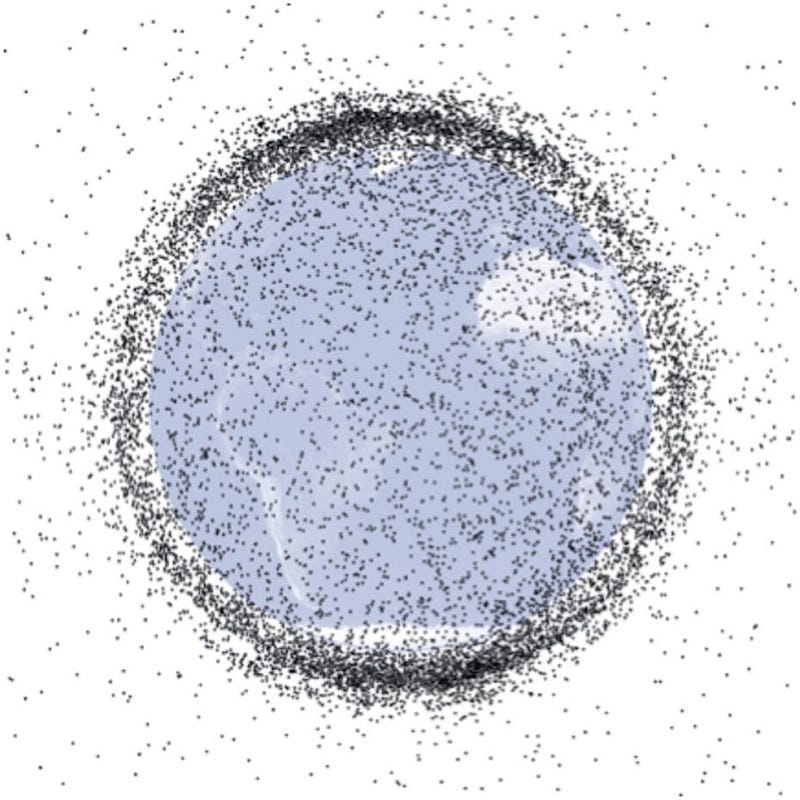
In addition, these satellites are not in traditional low-Earth orbits, which will decay and fall back to Earth on timescales of months, years, or (at most) decades, these satellites are at elevations of over 1,000 km, where orbital decay will take millennia. Already, back in September, the ESA’s Aeolus satellite (used for Earth observation) had to make an emergency maneuver to avoid colliding with a SpaceX Starlink satellite, despite the fact that it was SpaceX’s responsibility to move.
Although SpaceX and Musk have issued statements claiming that:
- the satellites will have minimum impact on astronomy,
- SpaceX will work on reducing the albedo of these satellites,
- and Starlink will provide on-demand orientation adjustments for astronomical experiments,
all of these statements are not yet true as of November 20, 2019.
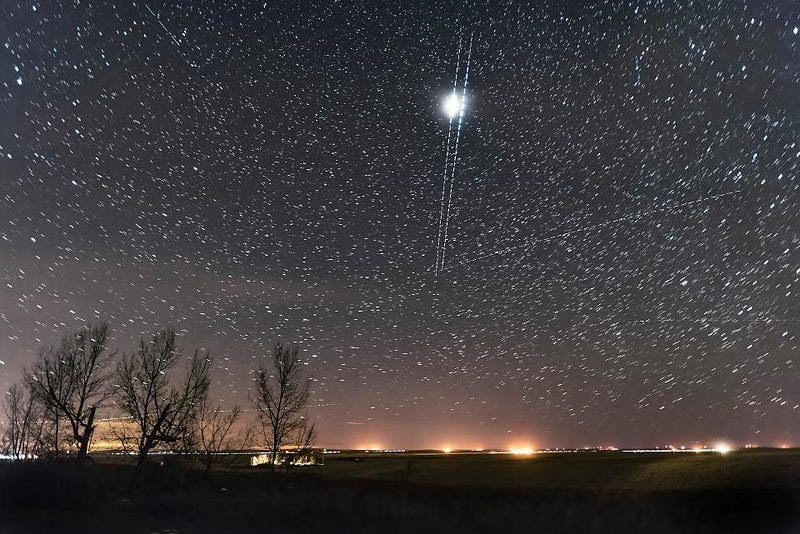
Previous constellations of satellites, such as the extremely successful Iridium constellation, proceeded in clearly defined and predictable orbits, were few in number (66 total), and only flared brightly when their orientation reflected sunlight in a particular manner. The Starlink satellites, along with similar planned constellations such as Kuiper Systems and OneWeb, pose a new and unique hurdle for ground-based astronomy.
According to Cees Bassa from the Netherlands Institute for Radio Astronomy, up to 140 such satellites will be visible at any one time from every observatory on Earth. However, if the companies behind these new constellations are willing to take just a few simple steps, all of these hurdles can be overcome. Here’s what a responsible steward of the night sky ought to do, and how SpaceX can undo the damage they’re in the process of inflicting on astronomy.

1.) De-orbit the current batch of Starlink satellites, and place a moratorium on the launch of new ones until the proper modifications have been made. Unlike most of the GPS and communications satellites we have today, the current Starlink satellites are large, reflective, and already causing some astronomers to throw out significant portions of their data. Currently at an altitude of 280 km, where they’re visible to the naked eye, they can now easily and safely be de-orbited.
But once they’re raised to their operational altitude of 550 km, they become a much more permanent problem. In addition, public awareness will drop, but they will remain visible to all binoculars and telescopes: the astronomer’s most essential tools. Every moment that these satellites are up there is the astronomical equivalent of callously rollin’ coal in the face of every scientist, researcher, and especially the undergraduate and graduate students who rely on hard-to-obtain telescope time in order to start their careers.
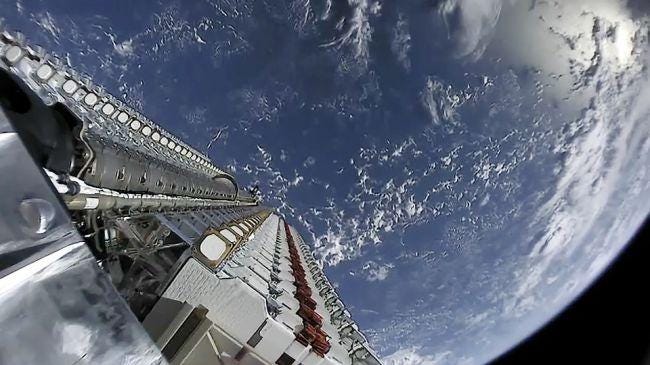
2.) Either redesign or coat the satellites to significantly reduce their reflectivity. Part of the problem with these new satellites is that they’re both large and highly reflective. But these problems are unnecessary: they’re choices. Choosing a different design, where the satellites can be oriented to minimize the impact on astronomy, would ameliorate the problem. Even more cost-effectively, simply coating the satellites with a very dark, low-albedo outer layer would go a long way to reducing the astronomically polluting effects of this constellation.
Albedo reduction, it is very clear from the current Starlink satellites, was not even considered as part of the design. By incorporating some common sense steps to reduce it — and I know plenty of astronomers willing to help with recommendations — the apparent brightness of these satellites can be reduced by a factor of approximately ~100.
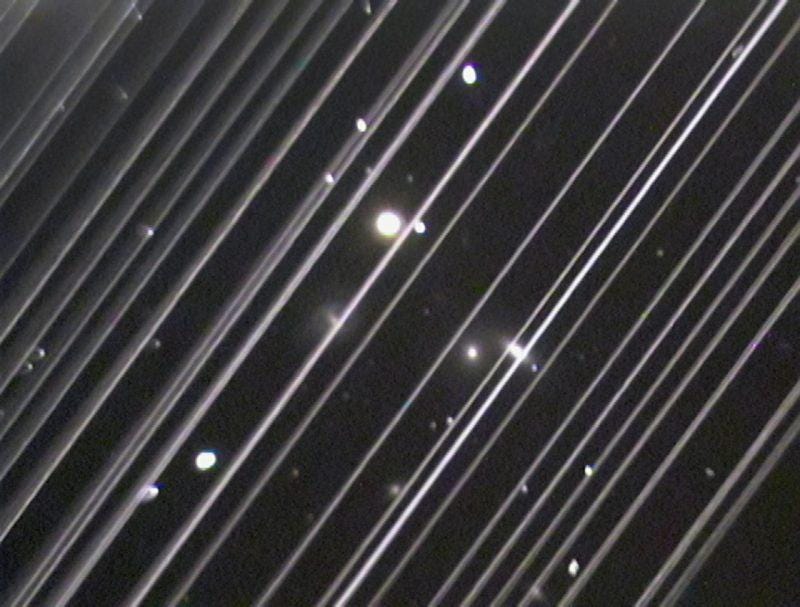
3.) Provide real-time trajectory plans, predictions, and adjustment information for each satellite to observatories worldwide. One of the worst things about these satellites is that they come without predictable trajectories. If their paths were known, astronomers could schedule observations that absolutely minimized their impact on the science, making good use of every moment of good seeing.
It should be not only easy, but mandatory, to set up a global network that tracked the predicted paths of each satellite in real-time, updated continuously to account for any maneuvers or course-corrections that were taken. By providing this information to astronomers, the polluted areas can be avoided at any moment in time, while still taking quality observations of as much of the sky as possible.
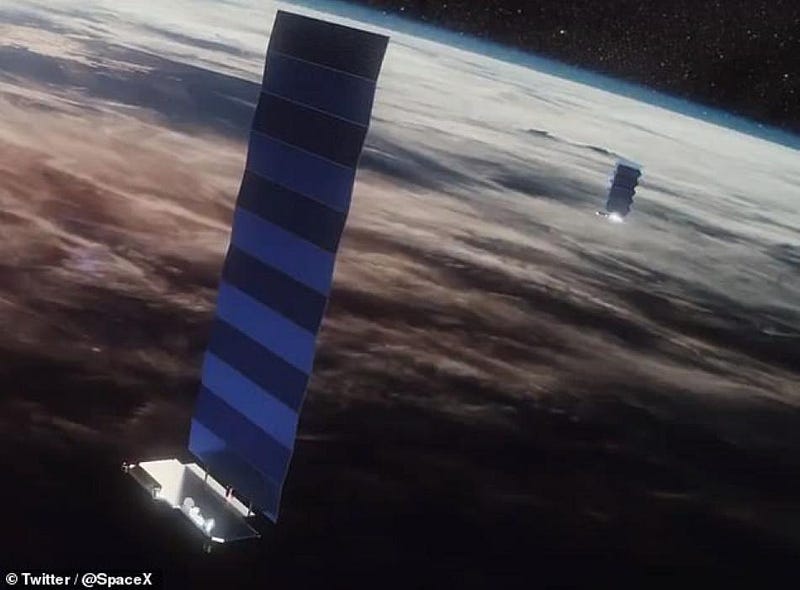
4.) Provide funding to assist astronomers in the development of hardware and software-driven solutions to subtracting out as much of the satellite pollution as possible. Even if all of these steps are taken, it will still be an arduous and expensive task for astronomers to account for the contamination that remains in their data. It’s unreasonable to expect that Starlink or any satellite-based company will have no impact on astronomy at all, but it’s extremely reasonable to demand that they fund the mitigation efforts astronomers will need to take.
This is how literally every other industry in the world works: if you plunder some aspect of the natural environment, you must make restitution for the damage that you caused. The astronomers that I know don’t care that you have satellites up there; they care that they’re still able to do their work despite them. It really isn’t too much to ask.

Right now, the Outer Space Treaty only prohibits the militarized use of space; all peaceful purposes are allowed. There are no consequences for damages done to the night sky and no regulations on pollution or contamination. So long as you register your satellite(s) and don’t cause an in-orbit or on-Earth collision, there is no legal liability to what you do.
The astronomical community’s only options are either to attempt to get laws passed protecting the night sky, or to hope that the industry will self-regulate. If companies like SpaceX, Kuiper Systems and OneWeb take the altruistic route of addressing these issues in advance of causing widespread problems, they will truly be worthy captains of this burgeoning industry. But it’s very scary to be entering an era where the future of one of humanity’s oldest sciences depends on the ethical compasses of a few profit-driven companies. Our understanding of the Universe, from nearby hazardous objects to the distant recesses of space, is no longer in the hands of astronomers.
Ethan Siegel is the author of Beyond the Galaxy and Treknology. You can pre-order his third book, currently in development: the Encyclopaedia Cosmologica.





